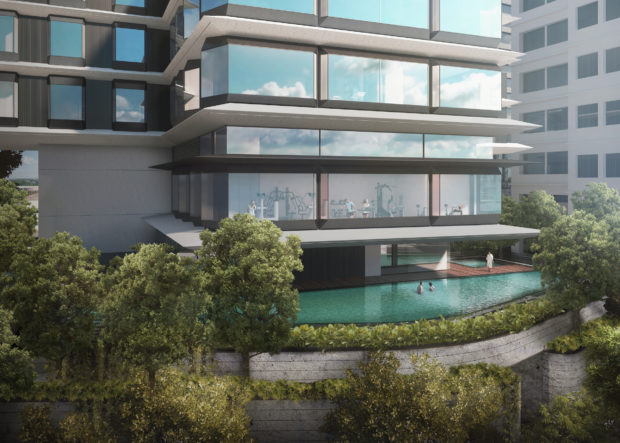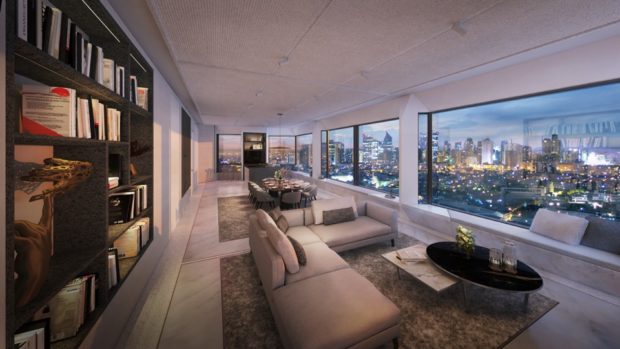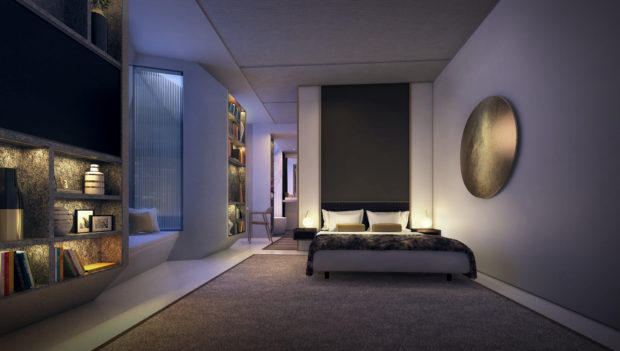The Gherkin in London, the HSBC Building in Hong Kong, the Apple Park in Cupertino, La Garenne-Colombes in Paris, the South Beach in Singapore—all of these properties have challenged the notion of what traditional architecture is, and showed the world how the architectural envelope can be further pushed once you design for the community which inhabits it and the natural spaces it will inhabit. “[A building] has to [participate] in the life of the city. It has to, obviously, work very well for its use and intentions,” says David Nelson, Head of Design at Foster + Partners, the international architecture firm whose resume includes the aforementioned properties, among a diverse portfolio of award-winning developments.
Something else all Foster + Partners developments have in common is they have sustainability at the heart of each structure. They take a holistic approach to this: from the detailed research they do on the physical and anthropological context of the area they’re developing, to the commitments they have made to numerous green organizations globally, to the transparency they exercise to ensure that their own best practices do not violate the commitments they’ve made.

Context Matters
It takes someone with particular experience to remember buildings do not exist in a vacuum, they’re meant to be inhabited, to be used, and to thrive in the context in which they’re built. Foster + Partners does extensive research on the community and surrounding areas their developments will inhabit.
Having a full image of the community they build in informs any sustainability feature they apply into the design.
While weather patterns are the more obvious contextual clues which helps the firm make design decisions, Foster + Partner takes it a step further by exploring the anthropological context: what kind of person is using the space? Are there any historical building best practices that local culture may have that already solves the problems we encounter in the space? Making these the guiding principles of design ensures any Foster + Partners development is not only future-proofed, self-sustaining, and community building, but also useful and optimized for its target audience.

No Carbon Copies, Nor Carbon Emissions
While the firm maintains it’s currently impossible to reduce carbon emissions to zero, even with the most carbon efficient design, any residual carbon emissions should be balanced through other means. This is why they’ve decided to build “beyond best practice”: applying everything they know and then some, making use of renewable energy or helping in reforestation efforts to neutralize existing and future carbon emissions.
This mandate which imbues all Foster + Partners projects has led to an array of developments with inimitable shapes, with London’s The Gherkin being one of the more unique designs. “Its shape took a long time to form, it’s not an arbitrary line. It’s in the shape that it is, to allow us to control air movement and wind. We discovered a long while ago that changing the section of a building or the elevation of a building actually can reduce the amount of steel they use or concrete to hold it up,” Nelson mentions.

Homes In The Sky
Being Foster + Partners’ first development in the Philippines, The Estate Makati, did extensive research and benchmarking to understand the site and the other developments which surrounded it.
In its exploratory paper, the firm discovered the importance of the “village” experience (driving along tree lined streets within a gated community provides warmth and privacy to the Filipino homeowner), and the need for flexibility to grow the home at any given moment.
Having familiarized themselves with the fickle Filipino weather, as well as the vehicle-heavy Ayala Avenue which fronts the property, the firm came up with passive design principles—solutions helping to offset The Estate Makati’s carbon footprint, as well as, providing comfort, privacy, and flexibility into the homes, built into the structure itself requiring little to no maintenance.
From this, the cruciform design was birthed. This gives all homeowners a true corner view, while optimizing sunlight, reducing electric consumption in the day. Protruding horizontal fins give shade and minimize the heat formed in sunlit areas. The windows are specially glazed to be self-cleaning and to protect from UV rays. They are angled to provide privacy and maximize space through the inhabitable facade. The Estate Makati is designed to harvest rainwater, to be used to irrigate the green spaces that take up more than a third of the property.

Inside, homeowners are given a blank slate: a column-free space supported by special cantilevered beams which let each homeowner customize their “lot” in the way they will live. This also foresees the growth of any family, with the flexibility of combining lots through an unlimited number of configurations.
Double slab technology, wherein the highly energy efficient home configurations like electricity and plumbing are fitted invisibly below the floor, rendering them mobile, without disrupting the structure or the neighbors.

The Future of Sustainable Architecture
“As an architect, you design for the present, with an awareness of the past, for a future that is essentially unknown.” It seems Norman Foster has a clear vision for the future of architecture: where developments are designed with a purpose—fitting its context and users—without being harmful to the world at large. He and his firm have made a commitment to useful design, creating a series of uplifting experiences for those who inhabit his work. If The Estate Makati and the number of Foster + Partners developments currently being constructed are any indication, he is well on track to making that future a very tangible reality.
Live a sustainable and luxurious life at The Estate Makati, a joint project between real-estate conglomerates SMDC and Federal Land, Inc. This is set to be Ayala Avenue’s latest crowning jewel, occupying the last parcel of land on Apartment Ridge road.
For more information on The Estate Makati, visit www.theestatemakati.com, or email contact@theestatemakati.com.
Article and Photo originally posted by Inquirer last July 3, 2021, 8:00am.







More Stories
Vista Land Celebrates 50 Years with Sandiwa: An Event Honoring Leadership, Legacy, and the Filipino Dream of Homeownership
Vista Land Celebrates Love Month in Ilocos Region
Vista Land Bridges Cebuano Heritage and Progress with Valencia by Vista Estates